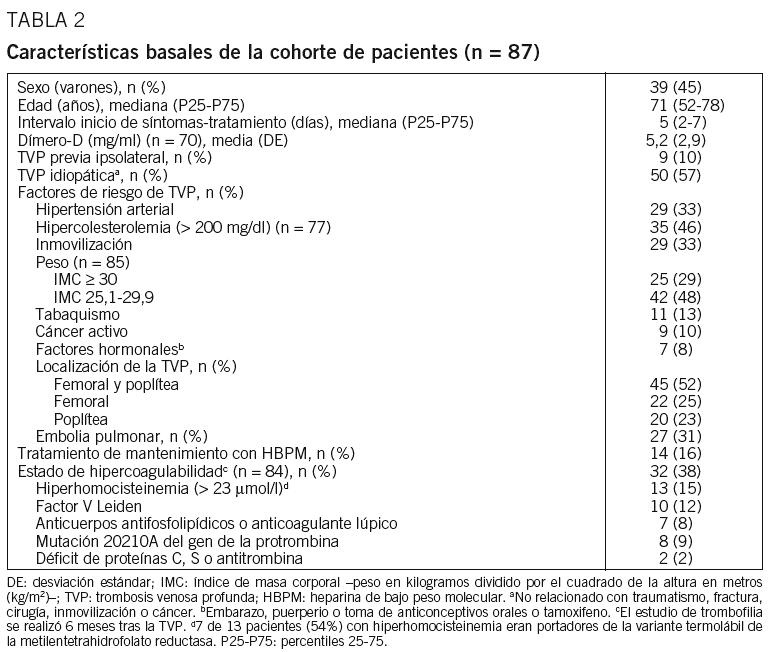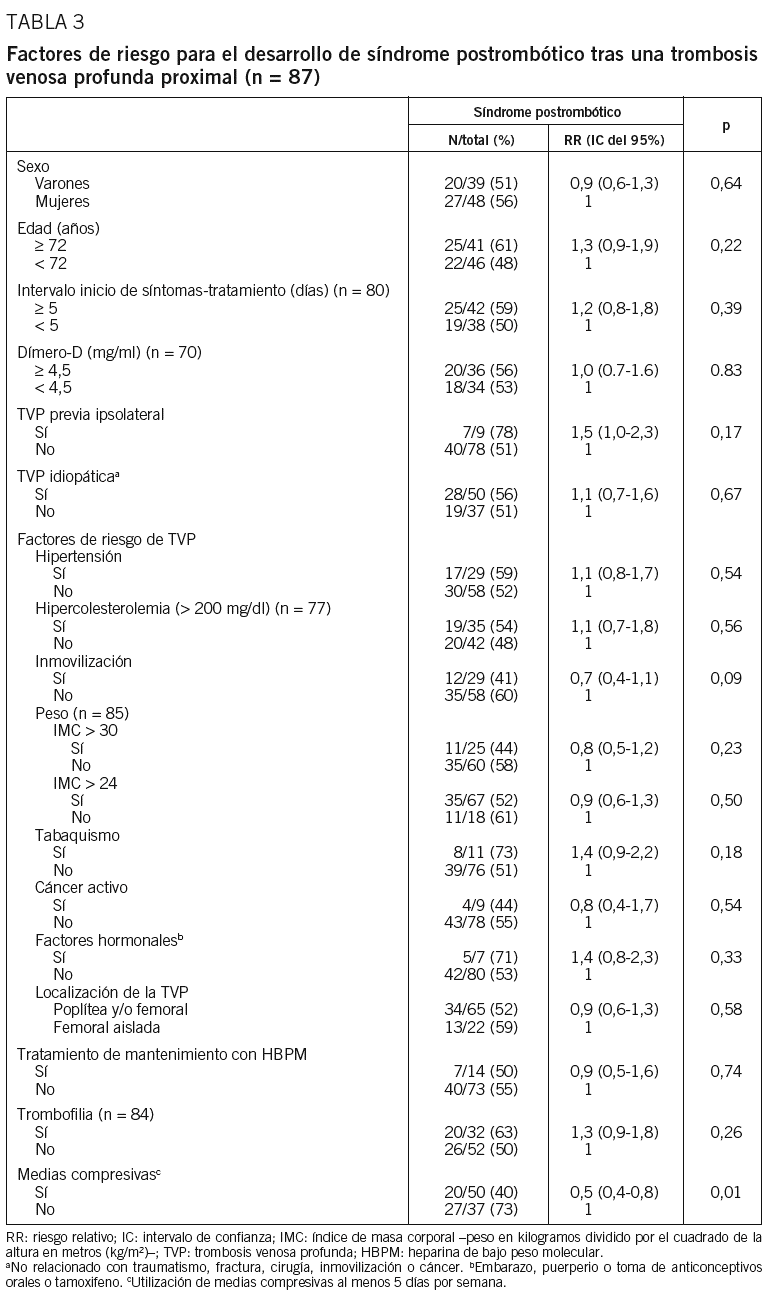Background and objective: The incidence and risk factors for the development of post-thrombotic syndrome (PTS) are not well known, so the aim of our study is to evaluate the development of PTS after proximal deep vein thrombosis (DVT) and its relationship with several clinical, laboratory and therapeutic factors.
Patients and method: Prospective, observational study. Inclusion criteria: consecutive patients with acute symptomatic proximal DVT in the lower extremities diagnosed between February 2000 and July 2002. Exclusion criteria: life expectancy < 12 months, impossibility for follow-up, renal or hepatic failure, previous PTS or varicosis and recurrent thrombosis during follow up. Endpoint: PTS at 12 months. Explicative variables: clinical risk factors for DVT, D-dimer value, hypercoaguable state, anticoagulant therapy and compression stockings compliance. Multivariable analysis (logistic regression) was performed.
Results: One hundred and seventy two patients with DVT were evaluated for inclusion. Sixty nine were excluded and 87 patients completed follow-up. PTS appeared in 47 patients (54%). Compliance of compression stockings was adequate in 57% of patients and decreased 45% the risk for PTS (p = 0.01). No significant associations were observed between PTS and others variables. Multivariable analysis confirmed the protective effect of compression stockings (RR = 0.3; p < 0.01) and previous ipsilateral DVT appeared significatively associated with PTS development (RR = 8; p = 0.01)
Conclusions: About 50% of patients with proximal DVT develop PTS within 1 year. Previous ipsilateral DVT is the strongest risk factor for PTS. Regular compression stocking use decreases the risk of PTS by 50%.
Artículo
Comprando el artículo el PDF del mismo podrá ser descargado
Precio 19,34 €
Comprar ahora










